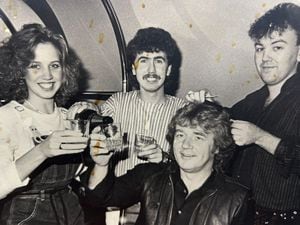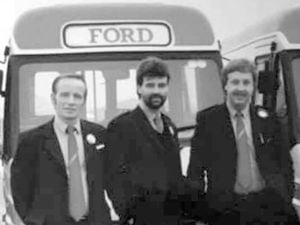The cover girl who won Dutch soldier's heart
She was dubbed "The Girl With The Tractor" and the image of the glamorous former debutante serving in the Women's Land Army made the front cover of the wartime Picture Post magazine.
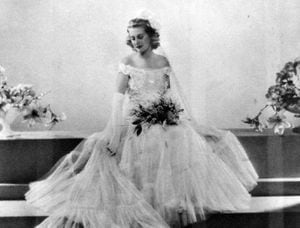
But, at her insistence, her name was not given.
Yet now she can be revealed as Patricia Hawkins from Cheslyn Hay, near Cannock, who came from a family of well-known local brick and tile makers.
"She had been a debutante in the summer of 1938 and 15 months later she was working in freezing cold dairy parlours milking cows," said her son, James Fack, of Shareshill.
Pat had joined the Land Army in September 1939 within a week of the outbreak of war and was put to work toiling on farms in Stafford, Lichfield, and Wolverhampton.
Word got round that a deb was working on farms and the Picture Post thought it would make a good story. Notable journalist Anne Scott-James, the mother of Max Hastings, interviewed her.
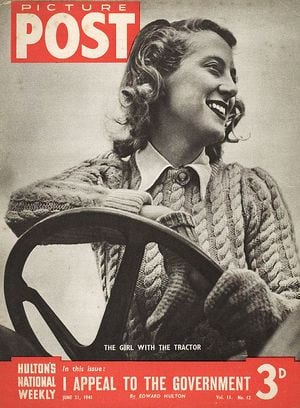
James said: "One of my friends has said the picture of The Girl With The Tractor is one of the most iconic images of the 20th century. But it doesn't say who the girl with the tractor was. That's because my mother refused to allow herself to be named, either on the front cover or in the interview itself."
The magazine had no option but to respect her wishes.
He added: "A number of officers around the British Empire knew very well who the girl with the tractor was and she even received a telegram of congratulation from Nigeria."
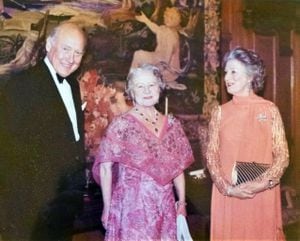
Pat, who became Mrs Patricia Fack, lives now near Chipping Sodbury and has turned 99.
Her late husband was Robbert Fack, who escaped in May 1940 as Holland fell to the Nazis and came to England, ending up on the outskirts of Wolverhampton in a military camp comprising patriotic Dutchmen determined to continue the fight.
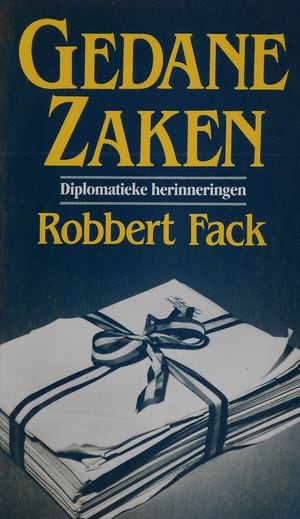
He wrote a book about his experiences, titled "Gedane Zaken," but until now its contents have been a mystery to her.
"My mother doesn't speak or read Dutch so she doesn't know what is in my father's book," said James.
However, some key chapters have at last been translated into English.
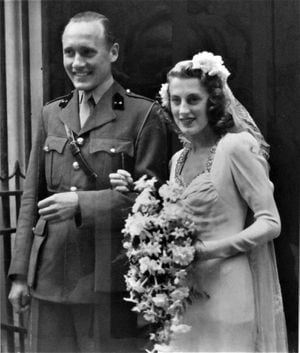
He said: "It's been done for me by Yvonne Corfield, from Shifnal. She was a Dutch woman who came to England in 1966, married an Englishman, and has lived here ever since. She speaks and writes very fluent English."
Robbert's tale was a remarkable one. Born in Amsterdam in 1917, he joined the coastal artillery as a reserve officer while still a student. At the time of the German invasion he was serving at an armoured command post in Fort Ijmuiden.
The general war situation quickly saw The Netherlands overwhelmed and news was phoned through of the surrender. While some of his colleagues were relieved, Robbert instead determined to go to the island of Walcheren by coaster and continue the fight.
"The captain, who owned the coaster, was instead taking them to England. It was the first my father knew of it, not that he would have minded," said James.
On arrival in England he first had to undergo security clearance in case he was a Nazi spy. He, with other members of the Dutch forces who had escaped to Britain, with numbers swelled by volunteers across the Dutch empire, became part of a Dutch unit formed to take the fight back to Hitler.
In January 1941 Queen Wilhelmina conferred on it the title the Royal Netherlands Princess Irene Brigade, named after her infant granddaughter. Robbert, who was a Lieutenant – later a Captain – became its Adjutant.
The unit ended up at the Wrottesley Park estate, with the first troops arriving in May 1941, where a huge hutted camp took shape, with the brigade staff such as Robbert based not far away at Danes Court.
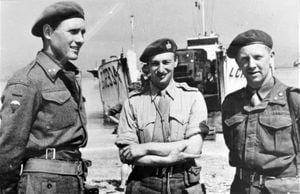
Fate was to bring Robbert and local girl Pat together. Pat's mother Dorothy Hawkins was the Red Cross quartermaster at Little Wyrley Hall, which was a hospital where troops from the Princess Irene Brigade who had been injured in accidents and so on were taken to convalesce.
When the Dutch officers at Danes Court decided to hold a dinner dance, Dorothy and her husband were invited along, and at the last minute they asked if they could take Pat as well.
"They arrived at Danes Court and rang the doorbell. The door was opened by my father. He took one look at her, she took one look at him. My mother says it was not love at first sight, but I suspect that it probably was," said James.
After a two-year romance, they married in London on October 8, 1943. Marriage meant she was immediately kicked out of the Women's Land Army.
Robbert joined the fighting in Normandy in the summer of 1944, where he was awarded a French Croix de Guerre.
James said: "I only once asked him what his memories of Normandy were. He said he had two principal memories. One was the smell of rotting horse flesh. The German Army was towed by horses and they were blowing up quite a number in our advance. The other impression that never left him was that if a Tiger tank attacked you, you'd had it."
After the war Robbert became a successful Dutch diplomat around the world, ultimately as the Dutch ambassador in London from 1976 until his retirement on his 65th birthday in 1982. He was to receive the Dutch equivalent of a knighthood.
He died in 2010.




